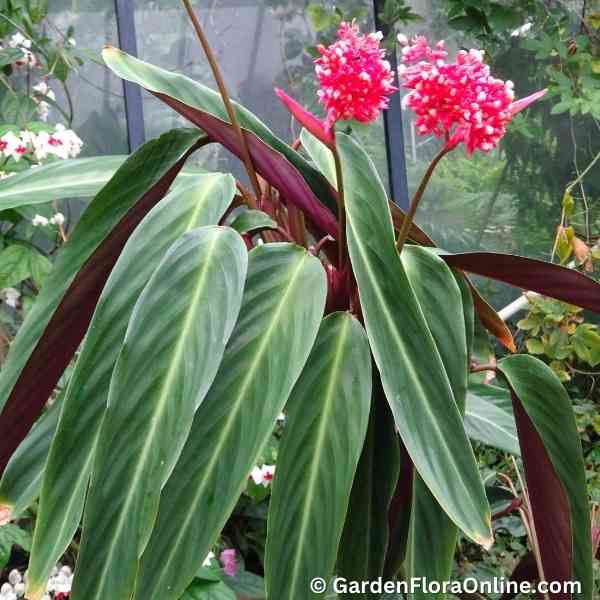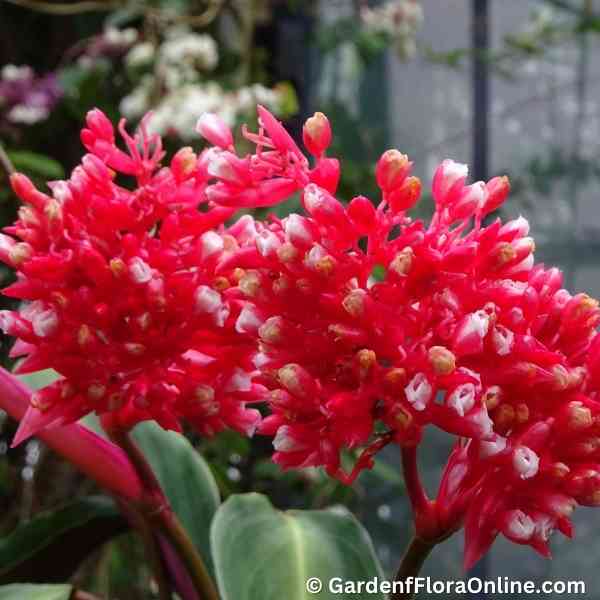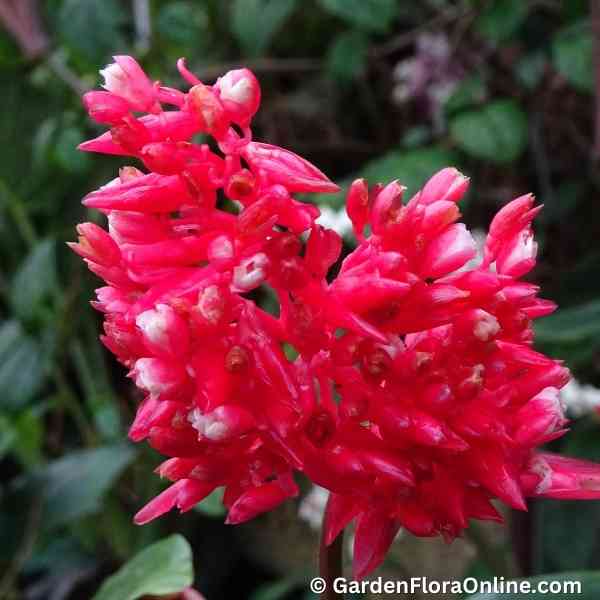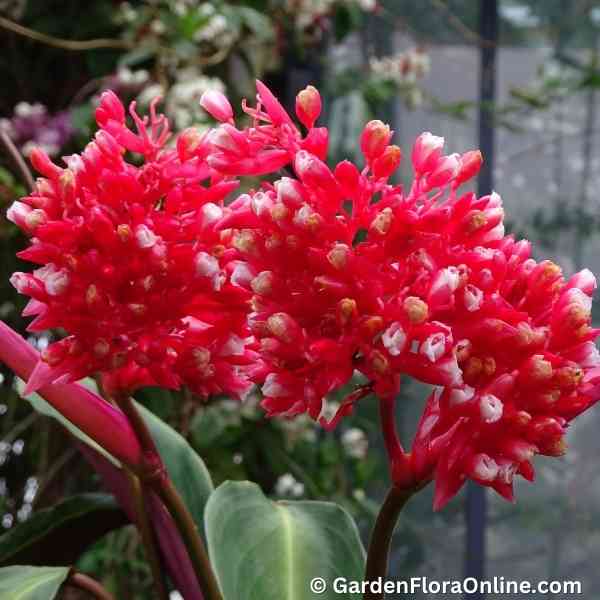Stromanthe thalia (Stromanthe)
A perennial herbaceous plant, Stromanthe thalia typically reaches a height of up to 152 cm. The leaves are elliptic-oblong in shape, measuring up to 51 cm in length and 15 cm in width. The typical species has an upper surface of the leaves that is glossy, dark green, while the underside is either wine-purple or variegated with green stripes. The cultivar ‘Triostar’ has an upper surface of the leaf blade variegated with shades of red, green, and white, while the underside is burgundy-pink. The peduncle, which is the stalk bearing the flower cluster, is approximately 31 cm longer than the petiole, or leaf stem. The inflorescence is branched, and the flowers are white, with the calyx and bracts exhibiting a striking cherry-red color.
Cultivation: The Triostar Stromanthe thrives in warm, humid environments and performs best when placed in areas with filtered or dappled light, which helps prevent leaf damage caused by excessive direct sunlight. As an indoor plant, regular cleaning of its leaves is recommended to ensure optimal light absorption. The ideal soil for this plant is one that balances moisture retention with good drainage, allowing the roots to breathe while avoiding overly dense or waterlogged conditions. Consistent watering is crucial for maintaining its health, but the soil should never remain soggy. With proper care, this vibrant plant can flourish and display its stunning foliage.
Etymology: The genus name Stromanthe originated from two Greek words, stroma and anthos. Stroma translates as “bed,” and anthos means “flower,” referring to the plants inflorescence. The specific epithet thalia is Greek for “to blossom” or “blooming.” The cultivar name ‘Triostar‘ highlights the plant’s striking variegated leaves with three primary colors—green, cream, and pink.




